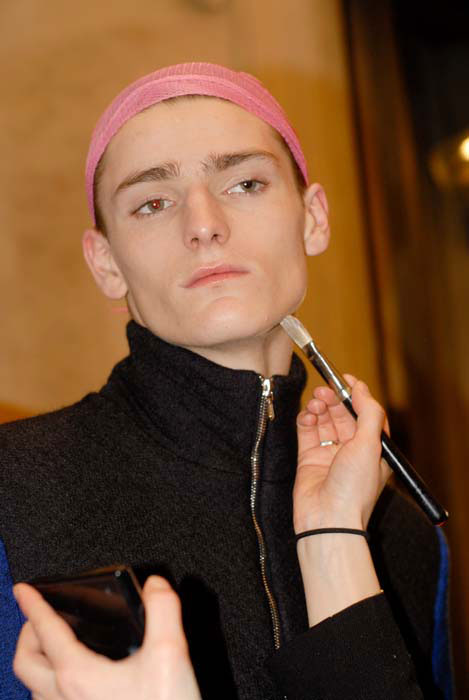Discovery: Steffie Christiaens Doesn’t Mind the Label Balenciaga
After assisting Nicolas Ghesquière at Balenciaga for years, Steffie Christiaens launched her first eponymous collection yesterday afternoon. The Netherlands-born designer presented a collection bridging the statuesque constructions of Ghesquière and her own taste for mythology and architecture—to the sounds of a live opera singer sitting with a mouthpiece in the audience. We met her backstage minutes before the show and talked about her childhood spent doing scientific experiments, her years at Balenciaga, and design by blowtorches.
ALICE PFEIFFER: You used to work at Balenciaga, and that’s probably the first thing people mention to you—is that annoying?
STEFFIE CHRISTIAENS: Yes, it does tend to be the first thing people mention, but I don’t find it an annoying label. It is more the technical dimension of my work that I would attribute to my time there.
PFEIFFER: From what you learned at Balenciaga, what are you keeping in your own line?
CHRISTIAENS: In Balenciaga I learned a lot about what fabric design can give to the garments, giving a whole new dimension and strengthening an overall effect. Comparatively, my work is very different in that I have a specifically experimental research process, and I work from this starting point to create my designs.
PFEIFFER: What wouldn’t have worked at Balenciaga?
CHRISTIAENS: Some of my blowtorch experiments would have seemed a little too unconventional for everyone over there, I think…
PFEIFFER: Your designs seem to refer to sculpture and architecture as much as fashion history.
CHRISTIAENS: My universe is lost somewhere within photography, art, science and architecture—all acting directly or indirectly as catalysts for my fashion designs.
PFEIFFER: You come from the Netherlands; how has your home culture influenced your relation to the body, to clothing?
CHRISTIAENS: My home culture has a lot of influence on my designs. I’m coming from a little village in the south of the Netherlands where only 1200 people live. It was not an overwhelming place filled with art and fashion, but it was an overwhelming place with nature, empty spaces and sober, realistic people.
PFEIFFER: How and when did this interest in fashion materialize?
CHRISTIAENS: Being busy in the garage building forms out of wood and metal and going to ballet classes at a young age was nice, but as I grew up I was missing things that were changing, moving and going on. I start photographing the sky, that was always different from every position. It was architecture and fashion that attracted me the most. After finishing high school, I decided to go for fashion, because for me it was more challenging to work with the movement and the shape in relation to the body.







